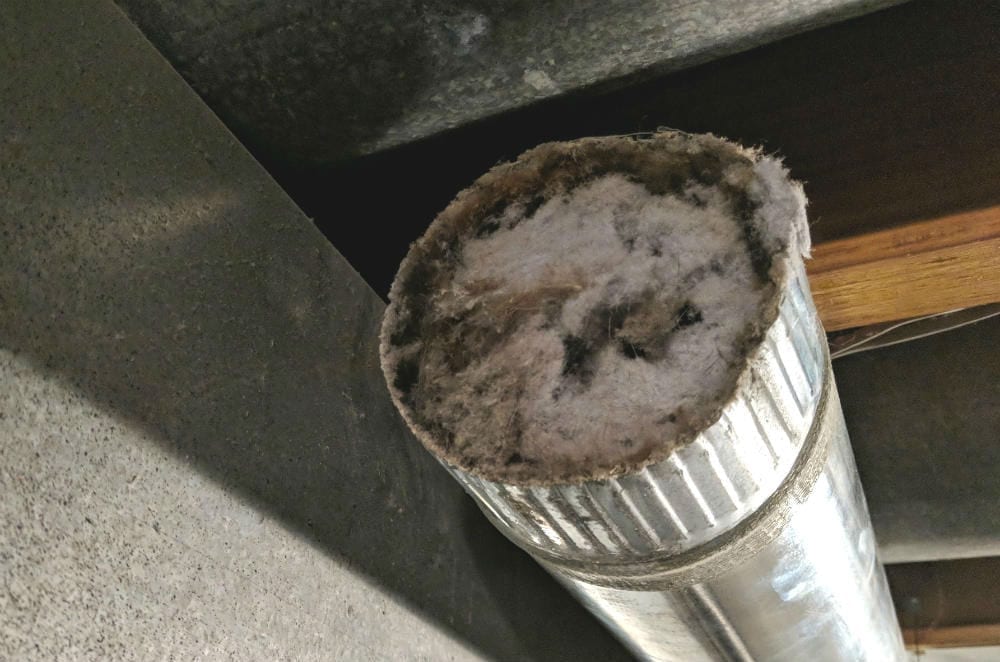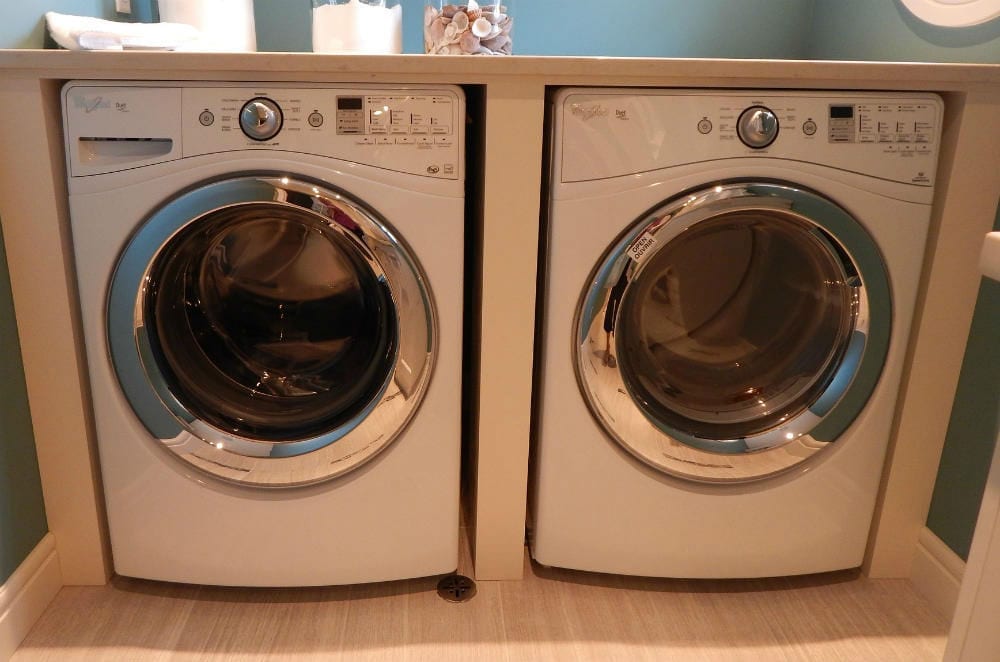Although dryer fires are rare, they do happen. While faulty appliances are sometimes to blame, lint buildup and improper venting are the main causes of dryer fires. Plus, dryer lint is flammable and can increase the damage from a d. We look at the causes of dryer fires, common water fire. We cover how to put out a dryer fire and look at the most common signs and causes. Plus, we explain how you can prevent them as well.
How To Put Out a Dryer Fire?
The best way to put out a dryer fire is with an ABC fire extinguisher. Pull the pin and then sweep the nozzle back and forth across the fire until it is completely out.
What To Do If Your Dryer Catches on Fire?
If your dryer catches fire, take the following steps as soon as possible:
- Move children and pets to a save area
- Do not open the dryer because this can spread the flames
- Use an ABC fire extinguisher to put out the fire
- If you can do so safely, unplug the dryer or shut off the power
If the fire has already spread to other rooms or you cannot put it out, call 911 immediately. Shut the door to your laundry room and then leave your home. Wait outside at least fifty feet away from your home until the fire department put out the fire.

Example of a lint blockage in the dryer exhaust ductwork
How To Prevent Dryer Fires?
1. Clean the Lint Trap After Every Use
The best way to prevent dryer fires is to empty the lint trap after every load and make sure it’s empty before starting another one. You should also vacuum out the lint trap every few months as well.
2. Check the Filter in the Rear
Most dryers also have a lint filter on the rear of the unit, where the exhaust vent connects. While this doesn’t need to be cleaned as much as the lint trap, you should disconnect the duct and vacuum the filter.
3. Clean the Exhaust Ductwork Every Year
The ductwork allows moisture and exhaust to ventilate. Over time, the ductwork can get clogged with lint, especially if you don’t empty your lint trap regularly. Take it apart and vacuum out the lint inside.
4. Clean the Exterior Exhaust Hood
Located outside of your home, the exhaust hood also builds up lint as well. Check the vent every few months and clean it with a vacuum at least once a year.
5. Don’t Overload Your Dryer
Overloading your dryer causes it to work harder and can build up heat. Over time, this can wear it out faster and increase the risks of sparks or overheating.
6. Never Run Your Dryer When You Are Not Home or Sleeping
While they are generally safe, you should never start your dryer before leaving home or going to bed. You should also install and regularly test a smoke alarm and a carbon monoxide detector nearby as well.
7. Replace Accordion Style Ductwork
While accordion-style ducts made of foil, vinyl, or plastic are extremely common and inexpensive, they are more likely to cause a dryer fire. Rigid metal ductwork is safer because there are fewer places for lint to collect.
8. Use the Right Materials
Although not always possible, use a four-inch diameter metal vent pipe for your dryer ductwork. Instead of screws which can collect lint, seal the connections with duct tape. Also, use a four-inch square exterior exhaust hood to increase airflow and limit heat buildup.
9. Minimize the Length of the Exhaust Ductwork
You should always use the shortest possible ductwork length and limit the number of bends when venting your dryer. This will improve airflow and reduce lint buildup.
10. Avoid Kinking the Ductwork
Leave enough room behind your dryer for the ductwork and avoid kinking or crushing it. This will restrict airflow and can cause it to overheat. If you want it flush against the wall, install a recessed dryerbox.
11. Vent the Dryer Outside
The exhaust ductwork should always vent outside. Never vent your dryer to the basement or anywhere else inside your home. Not only can moisture vapor lead to mold, but the exhaust may contain carbon monoxide.
12. Have Your Dryer Serviced
You should have your dryer serviced every few years. A professional inspection will ensure it’s working properly and prevent dryer fires.
What Are the Signs That Your Clothes Dryer Could Start a Fire?
While there are several signs your dryer could start a fire, the biggest is longer than normal drying time. This is usually caused by lint build-up. Other signs of a potential dryer fire include:
- Hotter than normal clothes after drying
- Smokey smells in your clothes after drying
- Sparks or sizzling sounds when it runs
- Gas smells around the dryer at any time
- Smoke coming out of the dryer when it runs
What Causes Dryer Fires
Most clothes dryer fires start when the unit overheats due to a lint build up. Lint can build up inside the dryer as well as the ventilation ductwork. Not only will it reduce airflow, but dryer lint is flammable. As it overheats, it can spark or short out and catch the dryer lint on fire. From there, flames can spread throughout your home.
How Common Are Dryer Fires?
According to the U.S. Consumer Product Safety Commission, there are more than 5,100 clothes dryer fires every year. Although the risk of a dryer fire is low, it could happen at any time. The risk is much higher if it is very old, faulty or if you don’t empty the lint trap regularly.
From smoke and soot stains to structural damage, a dryer fire can cause significant damage. Our restoration specialists offer fast and reliable fire restoration services. Call 1-888-443-3110 now for a free estimate on fire cleanup near you.





